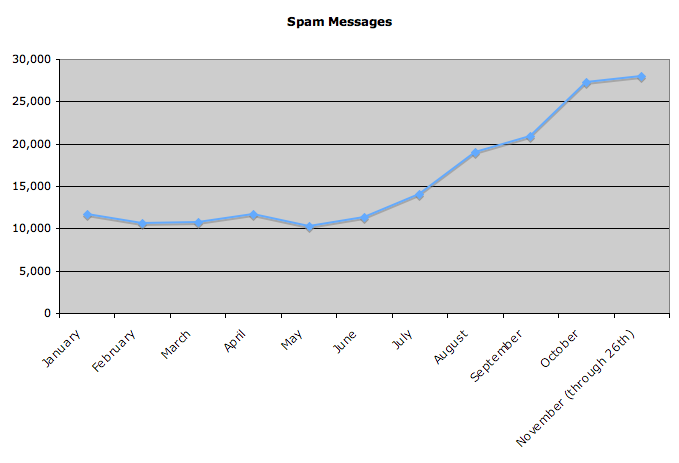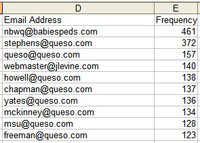There was quite a bit of teeth gnashing across the web throughout the evening yesterday as TypePad, LiveJournal, and all the other hosted Six Apart websites went dark; we learned late in the night that the cause was a “sophisticated distributed denial of service attack” against the sites. Digging a little deeper, though, it doesn’t look like this is a particularly accurate description of what happened — but instead of this being a case of the folks at Six Apart trying to cover up some internal issue, it instead looks like they’re being far too gracious in not revealing more about another company, Blue Security, which appears to have been responsible for the whole disaster. An explanation of this requires a slight bit of background.
Blue Security is a company which has recently garnered a little bit of notoriety on the ‘net due to its unorthodox method of attempting to control the problem of spam email. Last summer, PC World publshed a reasonably good summary of Blue Security’s antispam efforts; a charitable way of describing the method would be to say it attempts to bury spammers in unsubscription requests, but a more accurate description would be that the service performs outright denial-of-service attacks on spammers, and does so by convincing people to install an application (Blue Frog) on their computers which launches and participates in the attacks. Without a doubt, Blue Security’s system has generated controversy from the perspective of both unsolicited emailers and regular ‘net citizens alike, so it’s not all that surprising that the spammers recently began fighting back. One of the methods used against Blue Security has been a more traditional denial-of-service attack against the company’s main web server, www.bluesecurity.com, an attack which was effective enough to knock that web server offline for most of yesterday.
OK, so why is any of this information — about a company completely unrelated to Six Apart — important background? Because according to a post on the North American Network Operators Group mailing list, at some point yesterday the people at Blue Security decided that the best way to deal with the attack was to point the hostname www.bluesecurity.com to their TypePad-hosted weblog, bluesecurity.blogs.com. This effectively meant that the target of the attack shifted off of Blue Security’s own network and onto that of Six Apart, and did so as the direct result of a decision made by the folks at Blue Security. (The best analogy I can think of is that it’d be like you dealing with a water main break in your basement by hooking a big hose up to the leaking joint and redirecting the water into your neighbor’s basement instead.) Soon thereafter, the Six Apart network (understandably) buckled under that weight and fell off the ‘net, and over four hours passed before packets began to flow again. (And given that the www.bluesecurity.com hostname was still pointed at TypePad for most of today, I’d imagine that the only way those packets began to flow was as the result of some creative filtering at the edge of its network.) Judging from the outage, it’s unlikely that Blue Security gave them any warning — although who knows whether a warning would’ve prevented the basement from filling up with water all the same.
So, returning to my original point: saying that Six Apart’s services were taken down as the result of a “sophisticated distributed denial of service attack” is an incredibly gracious statement that only addresses about 10% of the whole story. The other 90% of that story is that Blue Security, a company with already-shady practices, decided to solve its problems by dumping them onto Six Apart’s doorstep, something I’m pretty damn sure isn’t part of the TypePad service agreement. I know that ultimately, the denial-of-service attack came from the spammers themselves, but it was specifically redirected to the Six Apart network by Blue Security, and I hope that they get taken to the cleaners for this one.
(I’ve just begun experimenting with the social bookmarking/commenting site Digg; as I’m clearly in favor of more people understanding how the outage came to occur, feel free to Digg this post.)
Update: Computer Business Review Online has picked up the story, and has some other details. Netcraft also has a post on the DDoS, and News.com picked up the bit from them, but there’s not much more in either bit.



